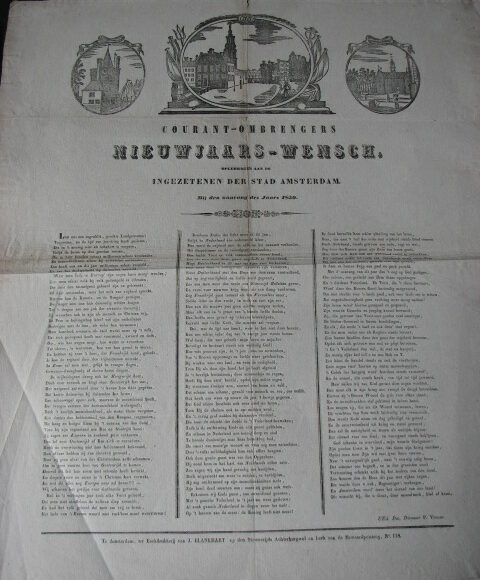Glossary
New Year prints

Other languages
- Polish: druki noworoczne (okolicznościowe)
Material form
Printed book, Single-sheet printSubject
Games and humour, Knowledge and skills, Music and performative literature, News and current affairs, Religion and moralityDescription
Whereas commercially produced Christmas cards only emerged in the mid-19th century, various types of print related to Christmas and the new year circulated in the early modern period.
From the mid-17th century onward, in various countries, printed Christmas or New Year wishes were distributed from door to door to solicit tips, for example bellmen’s verses in Britain and nieuwjaarswensen in the Low Countries. These wishes were printed sheets that typically contained a verse text and images or other decoration. They were produced and delivered by bellmen or other workers in the public space, such as garbage collectors, street sweepers, night watches and newspaper deliverers.
Christmas pieces – also known as school pieces or writing blanks – were single sheets with printed decoration and a blank space in the middle where a child could demonstrate their penmanship (Jill Shefrin is working on a descriptive bibliography). These print/manuscript hybrids were produced in Britain from the mid-17th to the second half of the 19th century, typically issued by schools before Christmas. Children might receive a small financial reward for their writing skills from relatives or others to whom they showed such a piece.
In France, noëls, songs celebrating the birth of Christ, constitute a substantial part of the Bibliothèque bleue (see Chapbook).
In the Low Countries, King’s letters was a card game played on the occasion of Epiphany.
Almanacs were published around New Year and were sometimes also presented as gifts on that occasion.

